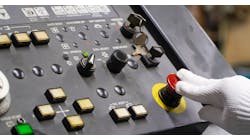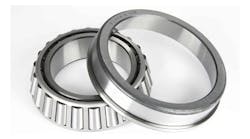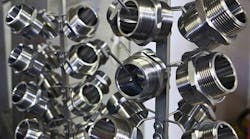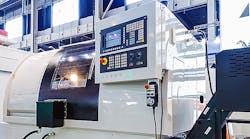There are so many different metal finishing processes that it can be difficult to know which is the best type for you. Do you need an anticorrosive finish, or do you just need something to make the metal look good for aesthetic purposes? Is sandblasting sufficient, or do you need to step it up to get a perfectly polished finish? We’re going to take a closer look at different metal finishing methods to help you figure out which finishing option is the best for your product.
Hand Finishing / Filing — Whether you’re filing fingernails or metal, you’re probably familiar with filing. A file is a hardened piece of steel that’s cut with parallel grooves. Those grooves create cutting teeth, which can be used to file down rough edges or shape materials, depending on the skill of the user.
Filing can have multiple applications, but isn’t ideal for fine finishing. If you need a very fine finish, or in cases where imperfections in the finish will cause problems with the final application, filing might not be the best option for you.
Sanding — Sanding is the next step up from filing, involving abrasive particles that are attached to various surfaces. Sanding can be done by hand or with powered tools. Sandpaper is classified by the size of the abrasive particles — the larger the particles, the more abrasive the surface. Each type of abrasive particle is assigned a number — the higher the number, the finer the particles. Water or other lubricants can be added to reduce friction and provide a smoother finished product.
Sanding is a great option for large surfaces, even those that are curved, but it is difficult to get a good finish in small openings or oddly shaped areas.
Sand Blasting — Sand blasting takes sanding to a whole new level. Instead of attaching the abrasive materials to a backing plate or paper, the abrasive sand is blasted over the surface that requires finishing. It’s an ideal choice for large areas, or for areas that require additional treatment — sand blasting is ideal for both improving corrosion resistance and improving the metal’s fatigue strength.
The latter is done via a technique called shot blasting. Steel balls or ‘shots’ are used to work the surface of the metal at high speeds. This generates pressure and improves overall fatigue strength.
Powder Coating — For surfaces that need additional anticorrosion treatments or will be used in a wet or corrosive environment, powder coating is a great option. Once the metal is polished and cleaned of any and all residual oils and grime, the powder coat can be applied. The powder itself is applied to every exposed surface, and then baked onto the metal, creating an impervious coating that provides protection and anticorrosive properties.
It also creates a very nice aesthetic look, so if you’re trying to improve the look of your equipment while taking steps to protect it and make it longer lasting, consider powder coating.
Magnetic Polishing — Large interior spaces can be awkward or difficult to sand or polish. Magnetic polishing allows you to get into all those oddly shaped spaces. Similar to sand blasting, magnetic polishing uses small abrasive particles to polish the surfaces. The difference is that these particles are magnetic, and can be controlled with a targeted magnetic field.
This is also ideal for small or oddly shaped pieces that need to be polished to a specific finish.
Tumbling — Tumbling might not be the final step in your finishing process but it is an essential step for any parts that need to have sharp edges or burrs removed. The process of tumbling is simple — you put your parts in a giant drum, with some abrasive materials, and set it to spinning. It’s primarily used to deburr punched or shaped metal pieces to prepare them for finer finishing. These burrs are difficult to remove with some of the other polishing or finishing techniques, which makes tumbling an essential part of any metal finish process.
The type of metal finishing techniques you choose will depend greatly on the type of metal you’re working with, and the shape of the materials that are being finished. Take the time to choose the finishing technique that works best for you. It will serve you better in the long run and help to prevent costly mistakes or unfinished work from leaving the shop floor.
Megan Nichols is an amateur astronomer and environmentalist, and a writer on a wide range of scientific topics. Her recent contributions to AmericanMachinist.com have examined the different advantages of electroless plating and traditional plating technologies, and the emerging standards for on-demand manufacturing. She has offered insights on managing workers and robots, improving machine shop efficiency, Smart manufacturing, and other emerging issues in manufacturing technology. Follow Megan on Twitter @nicholsrmegan.












